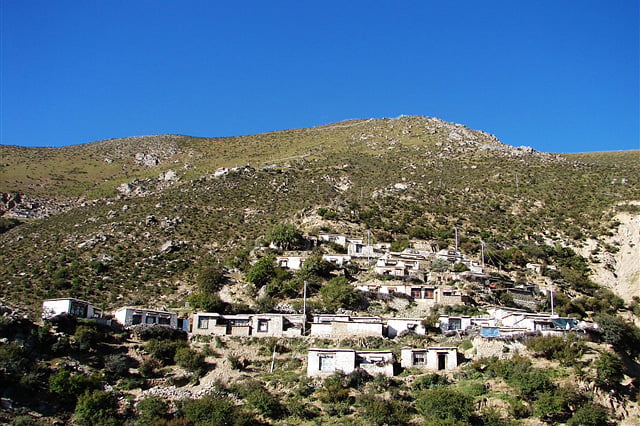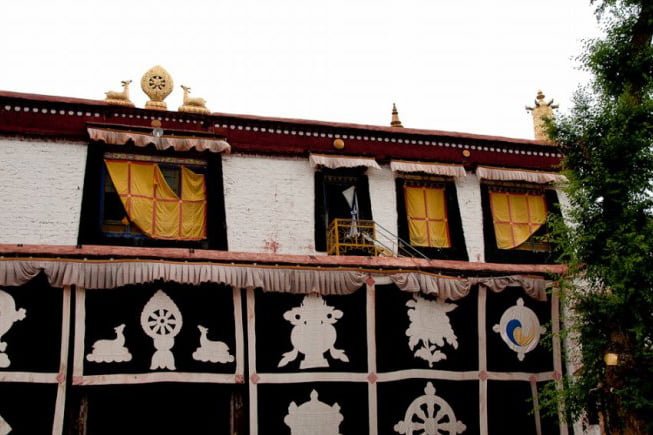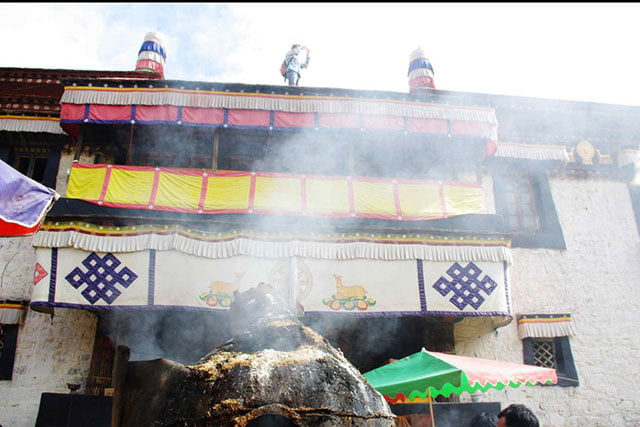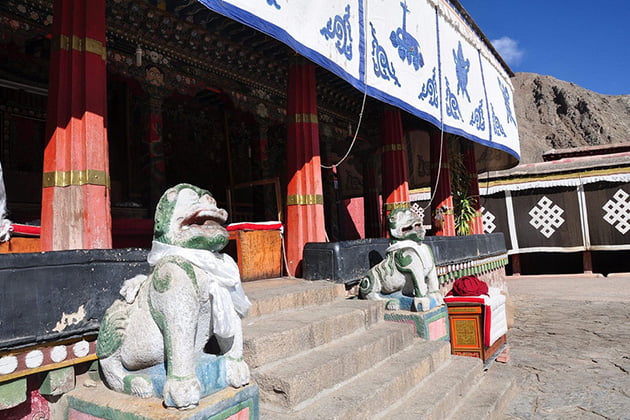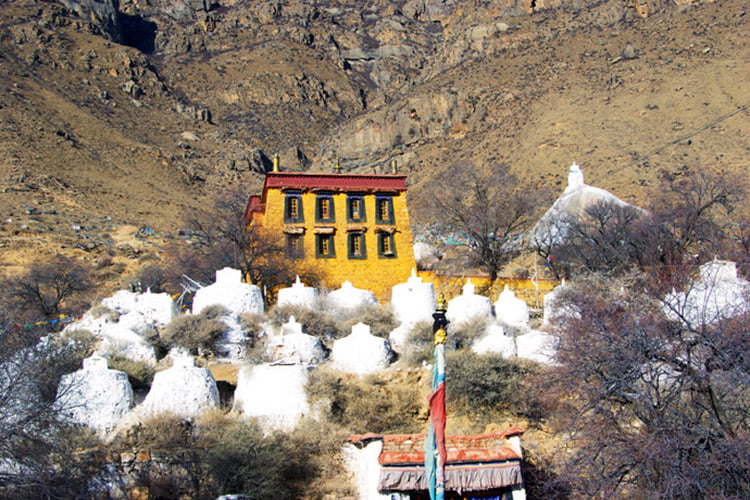About Tsurphu Monastery
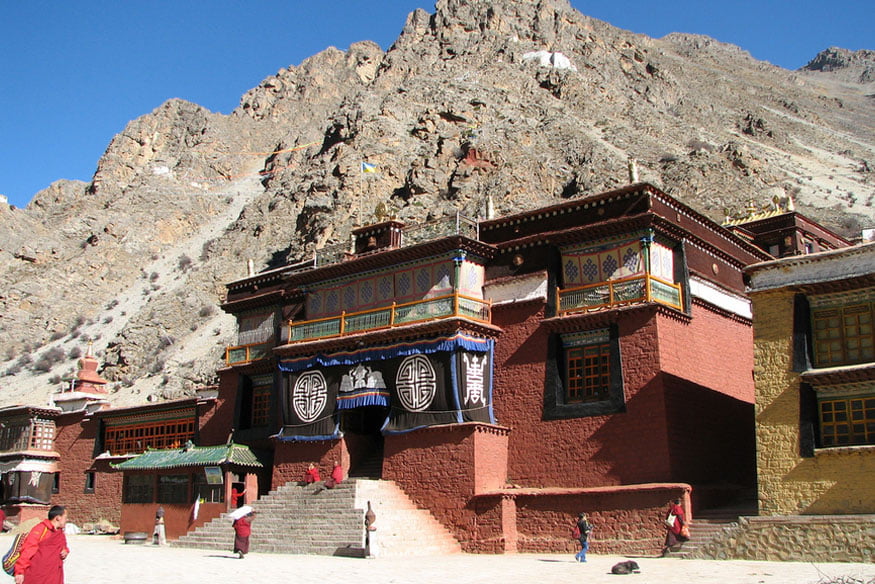
Around 65 km west of Lhasa, Tsurphu Monastery is the seat of the Karmapa branch of the Kagyupa order of Tibetan Buddhism. The Karmapa are also known as the Black Hats, a title referring to a crown– a copy of which was given to the 5th Karmapa by the Chinese emperor Yong Lo in 1407. Said to be made from the hair of dakinis, the black hat, embellished with gold, is now kept at Rumtek Monastery in Sikkim, India. You’ll see images of the 16th Karmapa wearing the hat, holding it with his hand to stop it flying away.
It was the 1st Karmapa, Dusum Khyenpa, who instigated the concept of reincarnation and he Karmapa lineage has been maintained this way ever since.
Tsurphu Monastery has an annual festival around the time of the Saga Dawa festival, on the 9th, 10th and 11th days of the 4th Tibetan month (around May). There is plenty of free-flowing chang (Tibetan barley beer), as well as ritual cham dancing and the unfurling of a great Thangka on the platform across the river from the monastery.
Tsurphu Monastery was founded in 1187 by Dusum Khyenpa, some 40 years after he established the Karmapa order in Kham, his birthplace. It was the 3rd Karmapa monastery to be built and, after the death of the 1st Karmapa, it became the head monastery for the order.

The Karmapa order traditionally enjoyed strong ties with the kings and monasteries of Tsang, a legacy what proced a liability when conflict broke out between the kings of Tsang and the Gelugpa oeder. When the 5th Dalai Lama invited the Mongolian army of Gushri Khan to do away with his opponents in Tsang, Tsurphu was sacked and the Karmapa’s political clout effectively came to an end. Shorn of its political back as an important spiritual center and is one of the few Kagyud institutions still functioning.
The Tsurphu kora, a walk of around 4 km is quite taxing if you are not acclimatized to the altitude. It ascends 150 meters, past springs, shrines and meditation retreats, providing splendid views of Tsurphu below.If you want to see more, you can follow the kora, taking the track from the west of Tsurphu. The track leads up to a walled garden. On the way, it also foes past walls of many stones. There is a sky burial site.
And you can also follow the cains that goes up the hill to a small pass marked by prayer flags. Here you can see all the the colorful kora dancing with the winds in all directions, just on the ridges above the monastery. And finally, you can go up to the Samtenling retreat. It is recommended that you pay a visit there before descending eastward. Because after the descending, you will go into a gully locating to the chorten at the northeastern corner of the monastery.
After visiting all the sites at and around Tsurphu Monastery, trekking from Tsurphu to Yampachen will add more interests to your trip. This rugged walk cross several high valleys before emerging into the broad and windswept Yampachen valley. The best time for this trekking is from April to October.

Tips of Tsurphu Monastery
- There is no guest house or hotels in or near Tsurphu Monastery, so you may as well not to miss the last bus coming back.
- The scenery along is very fascinating. You could also trek for a while and then hitchhike.

